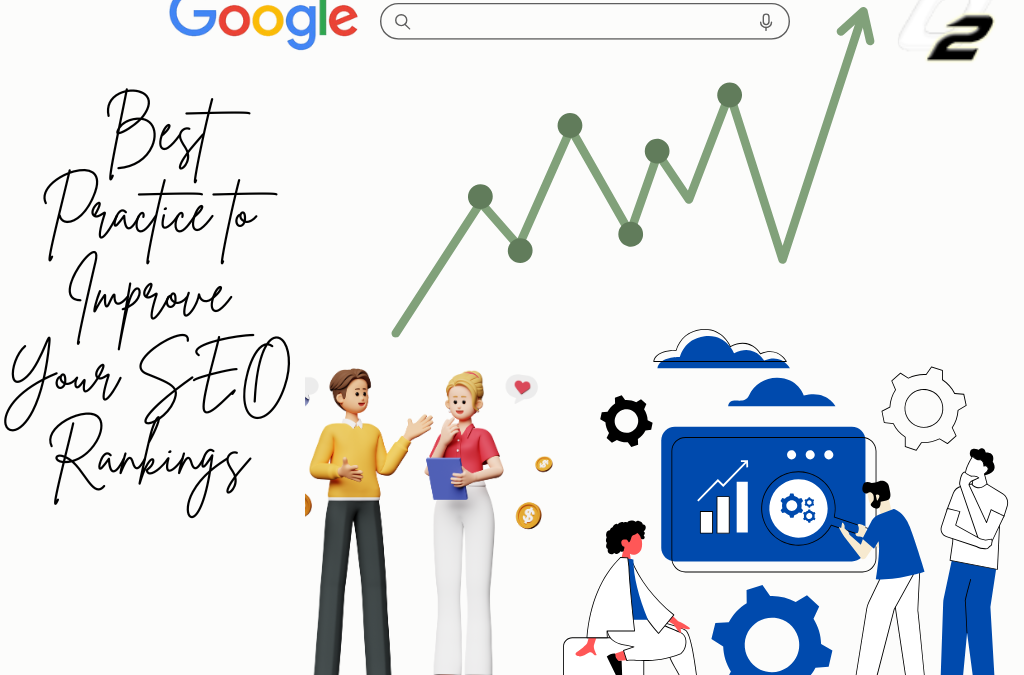
by Shashikanth Heerekar | May 12, 2025 | SEO News, Technology
10 Powerful Ways to Improve SEO Rankings and Drive More Conversions is your ultimate guide to results-focused strategies. Learn actionable methods to attract targeted traffic, increase authority, and convert visitors into loyal customers.
Why is there a need for SEO practices to improve ranking?
Want to get your website seen by more people and turn those visitors into customers? Then this is the ultimate guide for you. “10 Powerful Ways to Improve SEO Rankings and Drive More Conversions” gives you simple steps to do just that.
Let’s assume your shop is on the busiest street in the market, so more people will walk in and buy what you’re selling.
In the same way, Google (search engines) is also a type of market where many sellers (websites) sell their services or products. This search engine, like Google, will bring the right people your way.

These aren’t complicated tricks, but solid ways to make your website stand out. For example, if you sell handmade jewelry, we’ll talk about using the right words so people searching for “unique silver earrings” “latest necklace” “best earings to gift your loved ones“ this kind of keywords are often used according to the search intent of the users, so making sure using right keywords in the artcile can influence your google ranking.
By following the ten powerful methods below, you’ll not only see your website climb higher in search results but also attract visitors who are interested in what you have.
As a full-time content writer, I followed these rules, which have improved my ranking in Google top searches with full-proof images too.
This means more clicks, more engagement, and ultimately, more sales. It’s all about getting the right traffic and turning those visitors into happy, paying customers.
10 Powerful Ways to Improve SEO Rankings and Drive More Conversions
1. High-Quality, Comprehensive Content
According to my view, Great content is the backbone of any blog post to rank on search engine. Your content must be detailed, easy to understand, and better than what’s already ranking.
Make sure your article is not AI generated, it should be fully human written article and mostly try to add your own experiences or your knowledge while writting an article.
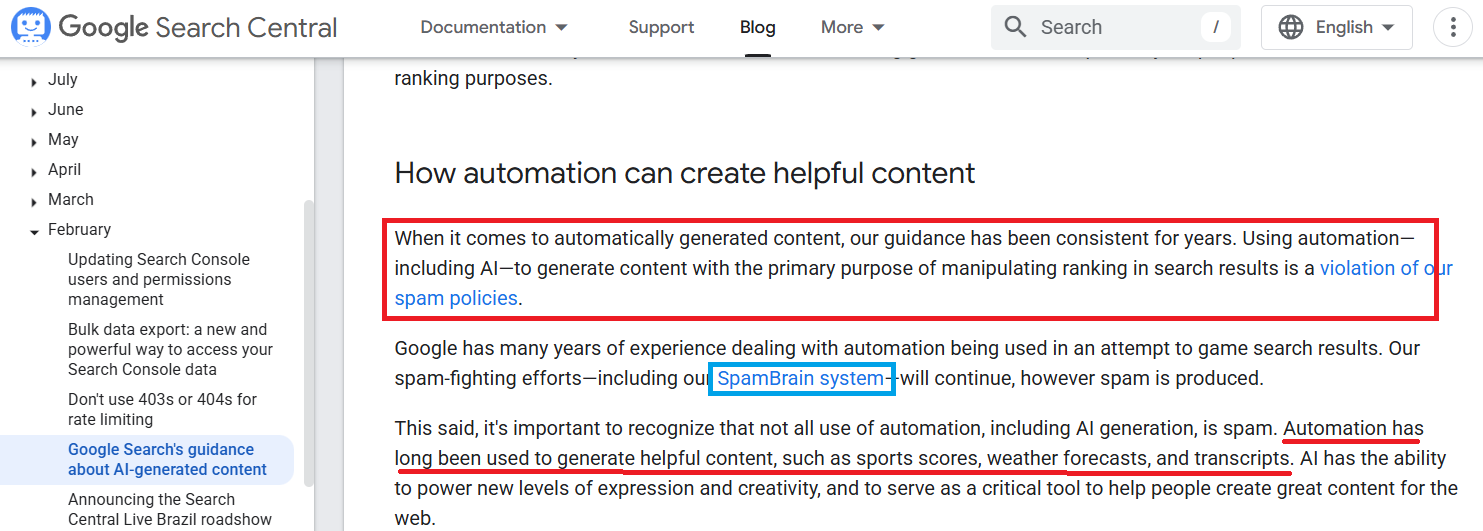
It has a greater impact on searches. Also, I recommend that you revise or update your content every 6 months, providing users with the latest information in your blog posts.
It also indirectly retains your old users to your blog post.
Answer all potential questions users may have about a topic in one place. For example, if you’re writing about “SEO best practices for content,“ include keyword tips, examples, and tools.
Google rewards pages that provide value and depth. Quality content helps build authority and trust, which are key parts of SEO success.

Note : seo services keywords is ranking because of good keyword and good content.
2. Prioritise User Intent
To improve your SEO rankings, you must understand what users are really looking for. User intent refers to the goal a person has when typing a query in Google.
For example, someone searching “best laptop for students“ here his intent to gain knowledge and he is looking for laptop which are sutiable for students. In this blog the user is looking for simple blog but not interested in the “evolution of laptop“.

Align your content with what people actually want. Use tools like Google Search, AnswerThePublic, and forums to learn what users expect.
Use or include those keywords that are actually the intent of the users. For example, if the user is having a commercial intent, then their query will be “best laptop under $500.” The searches will be different. Below is the image showing the same.
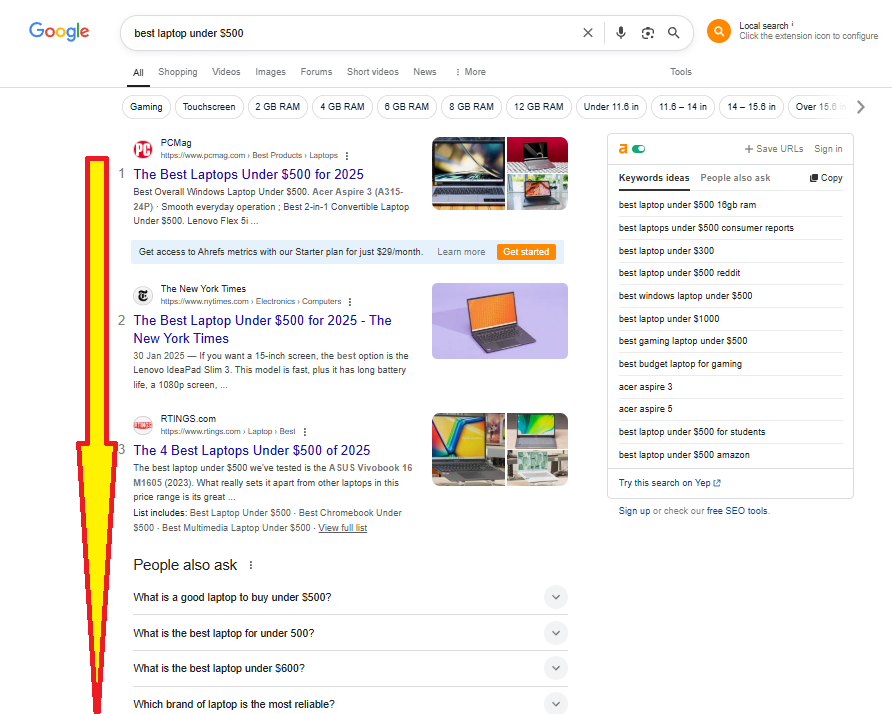
3. Embrace AI and Automation
In the above phrase i have mentioned not to write AI generated article, which i seriously support but here my context is different, copy pasting exaclty what AI has generated is totally wrong, which leads to spam and also plagarsim.
Here what iam trying to expalin you that the below mention tools are here to assist you in providing latest information in any feild. This automation tools will also provide you information from any external source, by adding the same infromaition in the your article leads to spam and plagarsim, which search engines does not support.
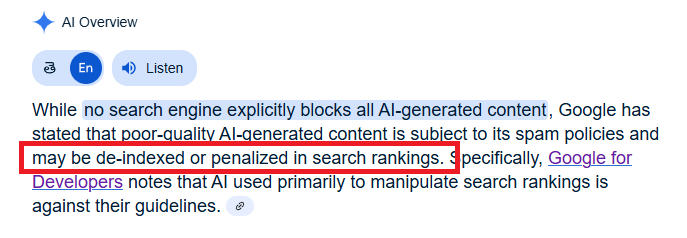
AI tools like ChatGPT, Jasper, Gemini, SurferSEO etc can help you improve your content quality, helping in adding relevant keywords ideas, providing latest update regarding the topic which you are interested to write, it also helps to provide latest stacts which can be beneficial.
I mostly use chatgpt, gemini for knowing latest information according to my topic and later i will delivery article in my own context.
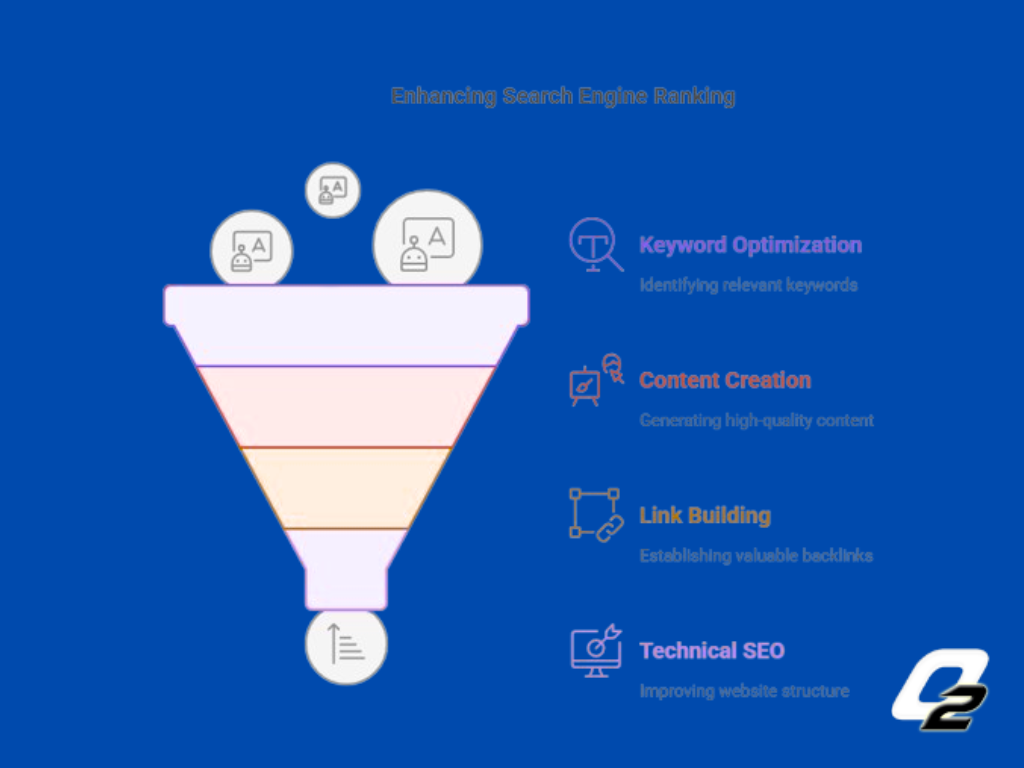
4. Focus on E-E-A-T
E-E-A-T stands for Experience, Expertise, Authoritativeness, and Trustworthiness. These are key principles Google uses to assess your site’s quality.
If you’re writing health content, readers want to know you’re qualified. Add author bios, cite credible sources, and update content regularly. This helps meet Google SEO best practices. For example, a financial blog with advice written by certified professionals will rank better than anonymous sources.

E-E-A-T strongly emphasizes content created by individuals with significant real-world experience in a specific field.
For instance, in the medical field, a blog written by someone with direct medical experience and expertise will naturally possess authority on the subject. Because the content is relevant and backed by genuine experience, search engines are more likely to recognize its trustworthiness and value it accordingly.
If you are interested in learn more about EEAT, visit this link – EEAT
5. Optimize for Mobile-First Indexing
Imagine you’re a movie director. Now you have two versions of the set: a grand, elaborate stage designed for a wide movie screen, and a smaller, more streamlined set built for a smartphone screen.
Nowadays, most of your audience is watching the movie on their phones, so you decide to emphasize the first smartphone set. You’ll make sure that the set looks fantastic, is easy to navigate, and has all the important elements visible on the smaller screen.

Even if your big stage set is amazing, if the smartphone set is disorganized or missing key features, your audience watching on their phones will have a poor experience or may not be interested in staying due to technical issues. And since most people are watching on phones, that matters most.
Optimization Tips in this new analogy:
- Responsive Design: Try maintaining a layout, size, and design that fits the big and small screens without losing key details.
- Speed Loading: If it takes too long for the scene to appear on their phone, they might get impatient and stop watching. Optimizing images and pages that load quickly on mobile can be clicked.

6. Improve User Experience (UX)
User experience impacts SEO rankings. A clean design, fast loading time, easy navigation, and clear CTAs (calls to action) encourage visitors to stay longer.
Let’s assume, if you are visiting online cloth website and it is taking much time to open and and the images which of clothes are not very clear and does not have “add to cart “button or “shop now“ or “Buy now “option then the user won’t stay on that webstie, he will switch to other store (website) soon.
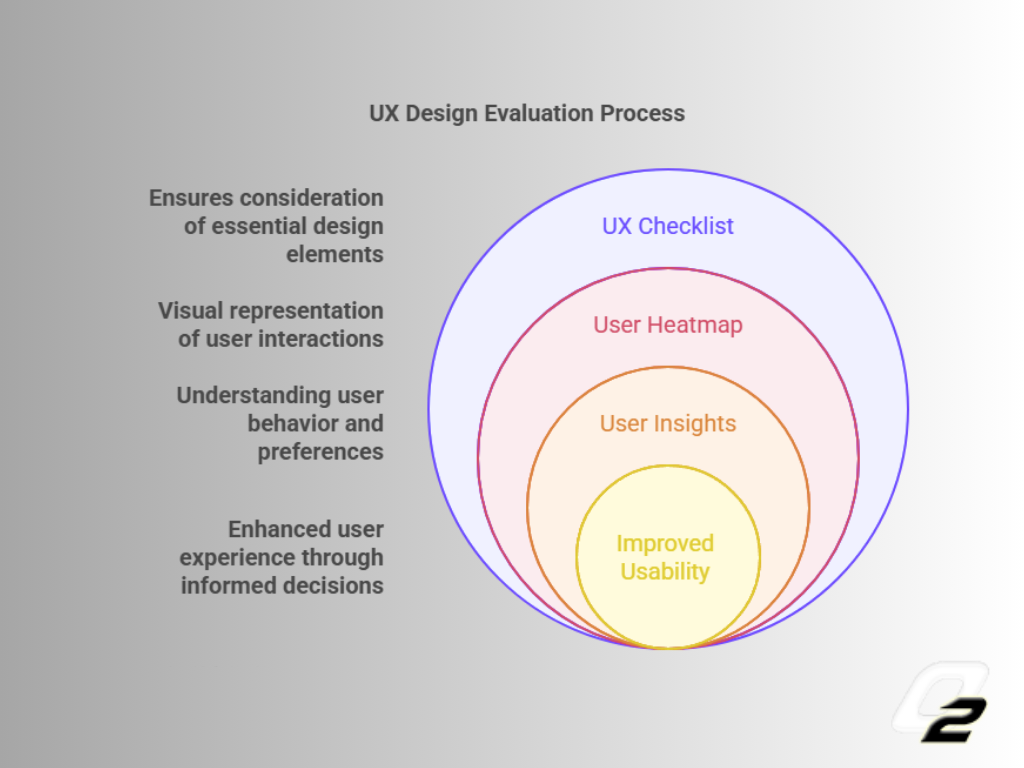
So, it is very important to maintain a website in a proper manner and provide users a good experience and Google notices.
Use tools like Core Web Vitals and GTmetrix to analyze UX metrics. A better experience leads to lower bounce rates, higher engagement, and better rankings—hallmarks of best website SEO.
7. Build Authoritative Backlinks
Okay, let’s talk about “Backlinks and Link Building“ and why they’re a big deal for how high your website appears in Google search results. Think of it like this:
Imagine different websites are like people, and a backlink is like someone recommending another person.
Why are backlinks so important for Search Engine Ranking?
Think of it as Google trying to figure out which websites are the most popular and trustworthy sources of information on a particular topic. If many other credible websites are linking to yours, it’s like many people are saying, “This website knows what it’s talking about!” ‘
This tells Google that your website is likely a good resource and deserves to rank higher in the search results.That’s why understanding and applying the right link building tips is crucial—because it’s not just about getting links, but getting the right kind of links from trusted sources.
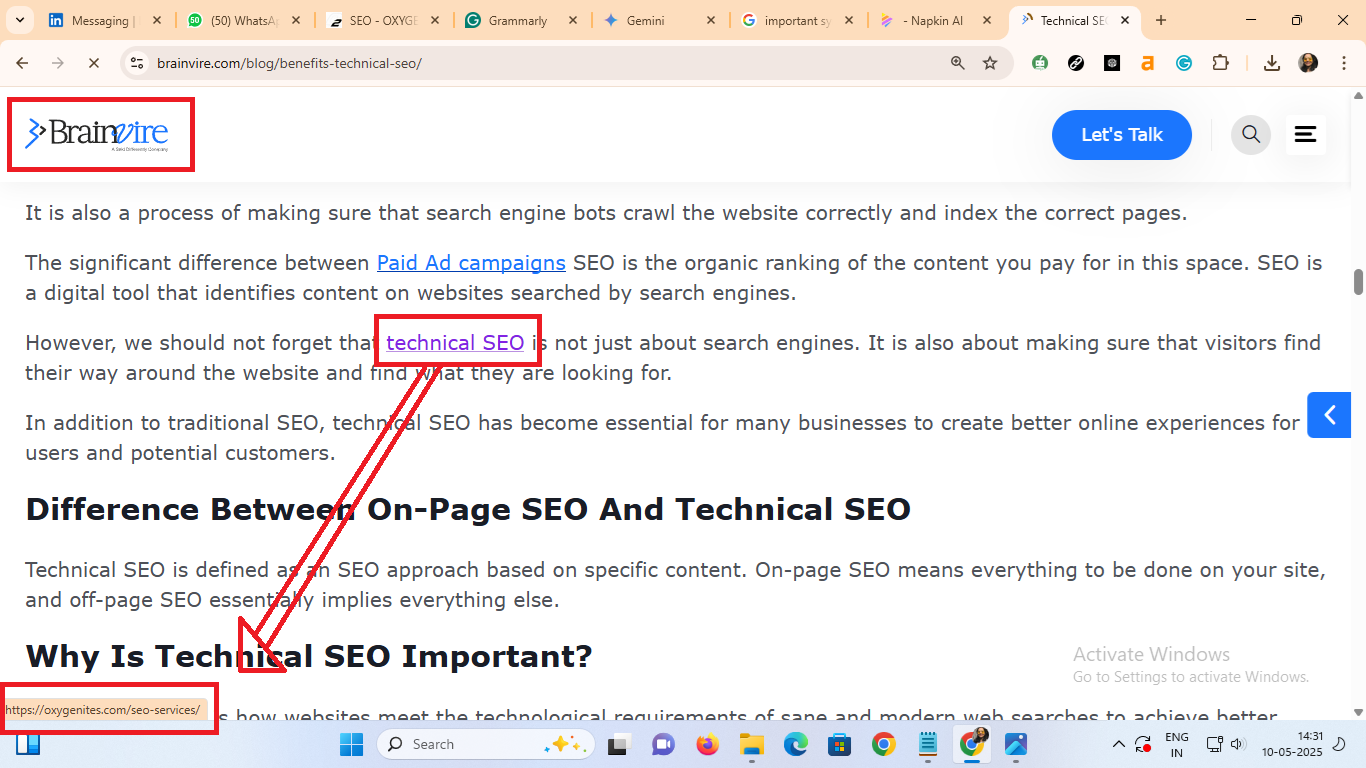
NOTE: Getting backlinks from high-quality and relevant websites is like getting strong recommendations. Strong recommandation will have good impact on search engines. For businesses aiming to improve their backlink profile, link building services can provide the expertise needed to secure these valuable endorsements.
8. Simplify Your URLS for Better SEO
A well-structured website facilitates better crawling and indexing by search engines. Let’s explain technical SEO and site architecture using a completely different image.
Imagine Google is like a delivery company trying to pick up and deliver packages (your web pages) to people all over the world.
Simple Example:
Think of a big news website. They publish many articles every day. If their website has a clear URL structure (like www.xyznews.com/sports/football/todays-match) and an updated sitemap that tells Google about each new article, it’s much easier for Google to find and index all their stories quickly so people can see them in search results.

In short, Technical SEO and site Architecture are very important for any website to provide users a proper guide to visit which category or the user is looking for, which subject he is interested in.

9. Optimize for Voice and Visual Search
Voice search optimization is now a days trending, most of the website have enable this feature in their website like voice search optimization and voice assistants.
Voice search offers hands-free convenience, especially while driving or cooking. It provides quick answers and streamlines information retrieval, making multitasking easier.
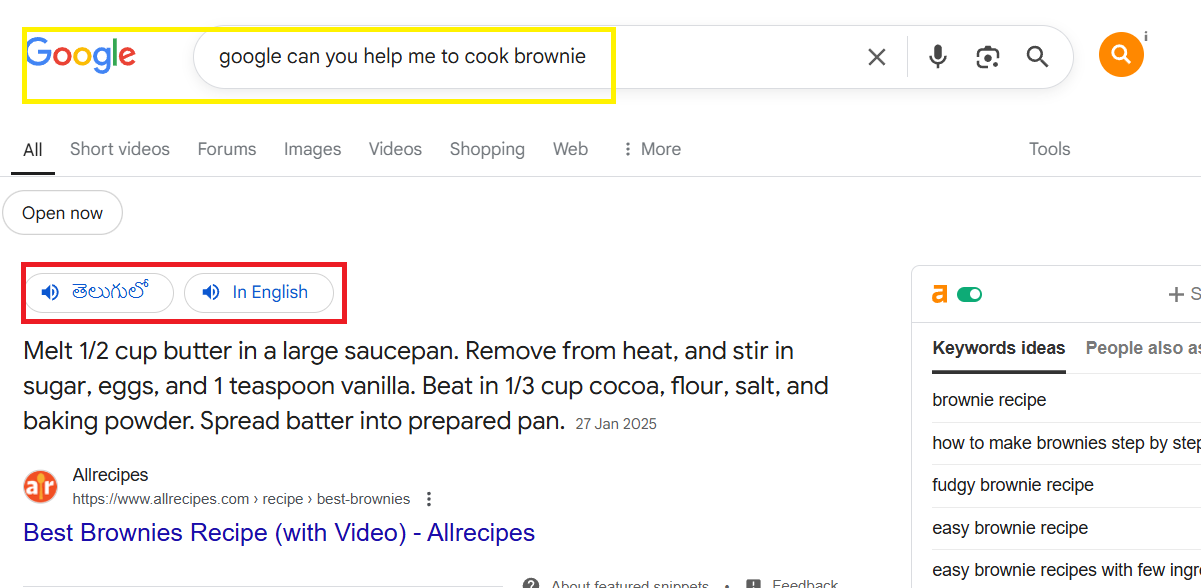
Many updated Divi theme provide this features, you can enable them.
Setting up voice search on your site is usually quick and requires just a few simple adjustments, and then it’s ready for voice commands!
10. Stay Agile with Algorithm Updates
Google updates its algorithms very often, affecting how sites rank. It’s very important to stay updated with google core updates, because following this google algorithm we can stay on top google searches.
It’s vital to stay current by following industry blogs like Search Engine Journal or Moz. If your rankings drop, check tools like Google Search Console to identify issues. Implementing best practices for SEO means being adaptable. Focus on content quality, user experience, and site health to stay ahead. Don’t chase every change—stick to long-term good SEO strategies that align with Google’s core values.
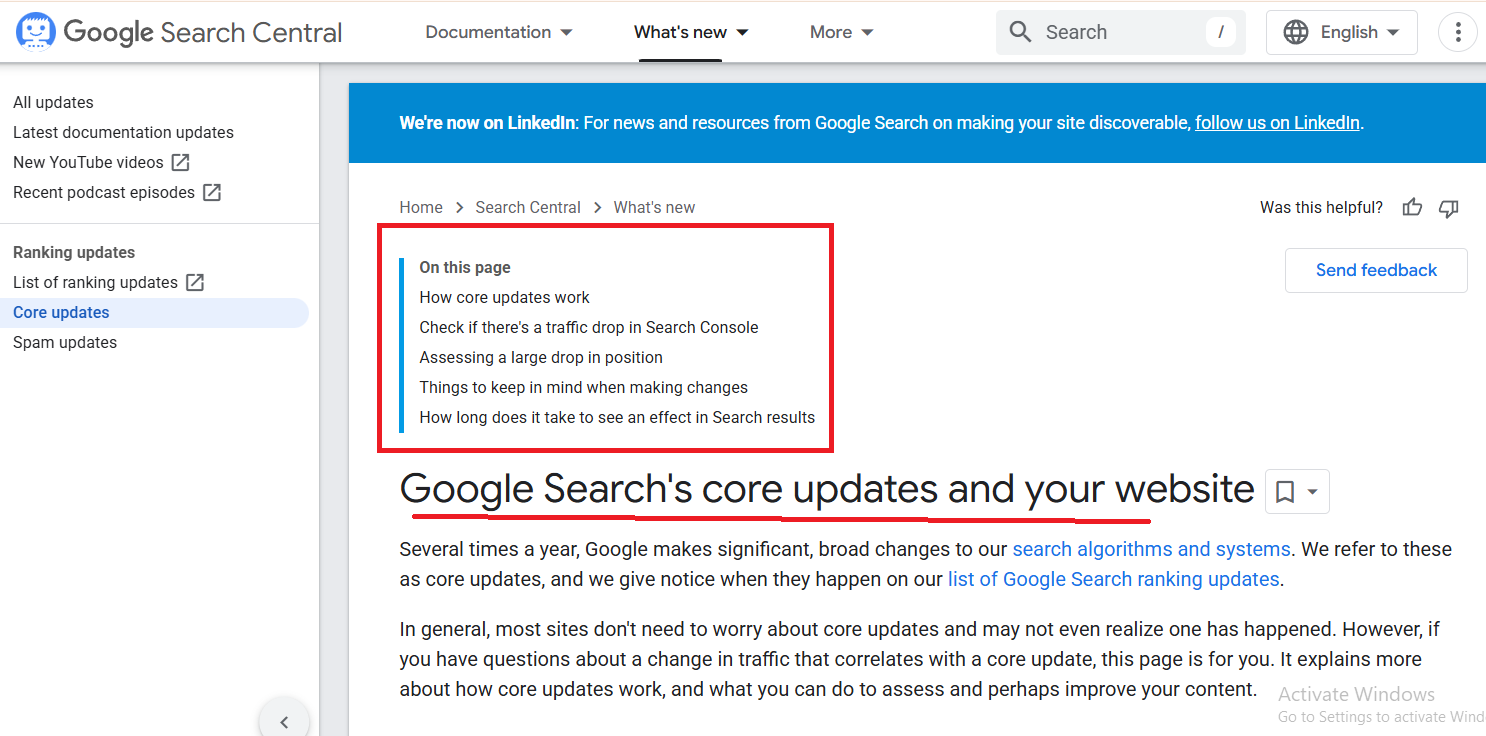
✅ Conclusion
Scaling your SEO rankings needs continously effort and smart ideas. By following above 10 best practices—like focusing on user intent, improving content quality, and staying updated and many more as mentioned above—you’ll not only boost your visibility but also attract the right audience. This is my personal experience which i have tired in my blog writtings. Remember, SEO isn’t just about ranking at once but also staying on that position in long term.
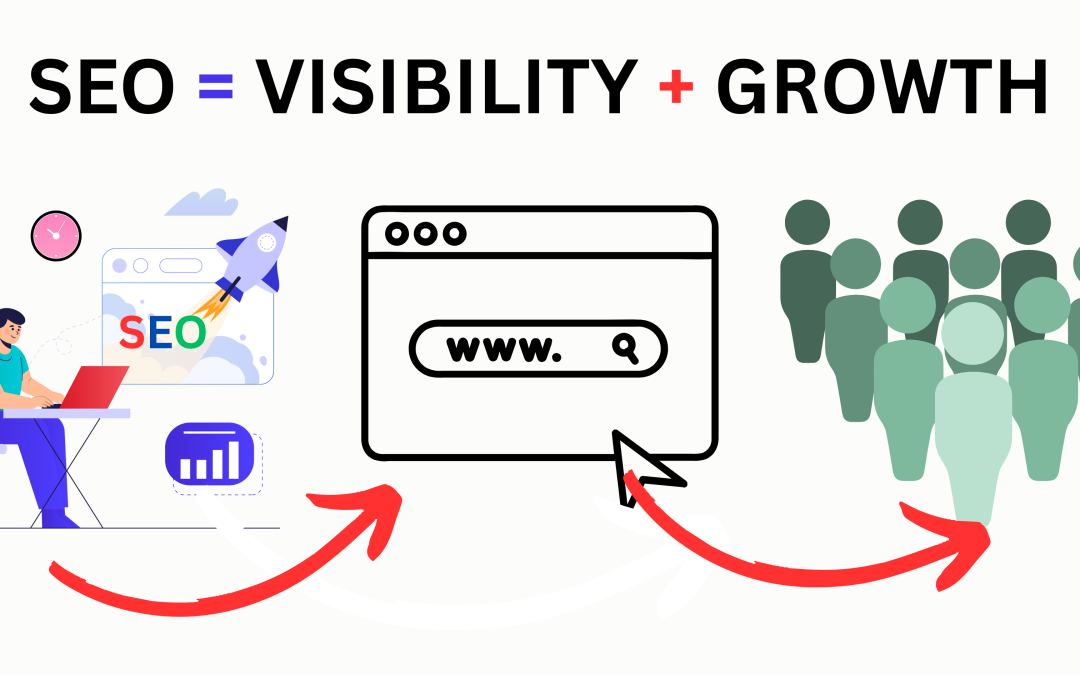
by Shashikanth Heerekar | May 6, 2025 | All Things about Marketing, SEO News, Technology
What Is SEO? Discover how SEO helps websites rank on Google. Here are easy tips for beginners to understand and apply SEO fast! Start learning now!
What is SEO (Search Engine Optimization)?
Search Engine Optimization, or SEO, is a method of improving a website’s visibility in search engine results pages (SERPs). It involves techniques and creative strategies to improve rankings, attract organic traffic, and increase the quality and quantity of visitors.
In other words, SEO is also about increasing the standard and total website traffic. As you improve your position in search engines, you’ll likely get more visitors who may be engaged in your website, its products, or its content.
For the best explanation, we can use a real example. For instance, if you search for the term ‘best AC service providers’ on Google, Google will show you the top-ranking website for your keyword. Google shows these results for free, and the number of visitors coming through this is called organic traffic.
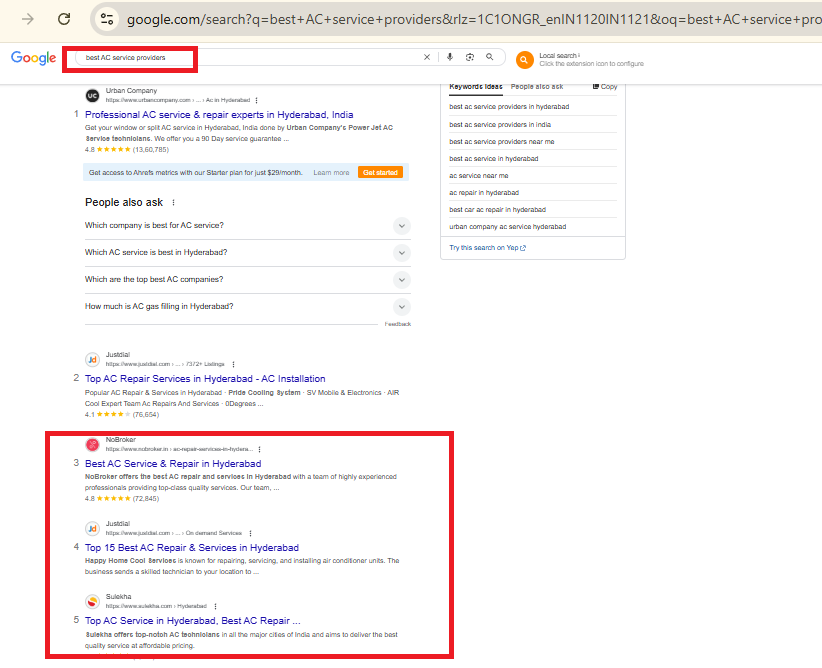
Why is SEO Important?
Catering to a Huge Audience
Most online approaches begin with a search engine. Ranking high means visibility in front of a wide, global audience actively searching for your products or services.
Low Cost of Implementation
Compared to paid advertising, SEO is cost-effective in the long run. You pay with time and effort upfront, but you can enjoy consistent traffic once you rank.
Staying Ahead of the Competition
Your competitors are investing in SEO. If you don’t, you’re handing them an advantage. SEO helps you stay relevant and ahead in a competitive online landscape.
Enhance User Experience
Good SEO practices improve user experience. You can please Google and your visitors by offering fast load speeds, mobile optimization, and easy navigation.
Builds Trust and Credibility
Sites that rank well are considered more trustworthy by users. Authority backlinks, quality content, and user-friendly design contribute to your reputation.
Data and Analysis
SEO provides valuable insight into user behaviour through tools like Google Analytics, Search Console, and Heatmaps.
How Does a Search Engine Work?
Search engine tools like Ecosia, Bing, StartPage, Google and DuckDuckGo are important systems that help users find accurate information quickly with accuracy. They follow a multi-step process that includes crawling, indexing, and ranking. Let’s break it down:
Crawling
Crawling is the first step in the process. Search engines send out automated bots known as crawlers or spiders to discover content across the web. These bots move from one page to another via links, collecting information such as:
- Page titles
- Meta tags
- Image alt texts
- Content structure
- Internal and external links
Search engines start with a known list of URLs (called a seed list) and, crawl those pages, then follow hyperlinks on those pages to discover new content. Crawling helps search engines discover which websites exist and what they contain.
✅ Example: Googlebot is Google’s main crawler. It continuously explores the internet, discovering new content and re-crawling updated pages. In the below as you can see, google has crawled and index your post.
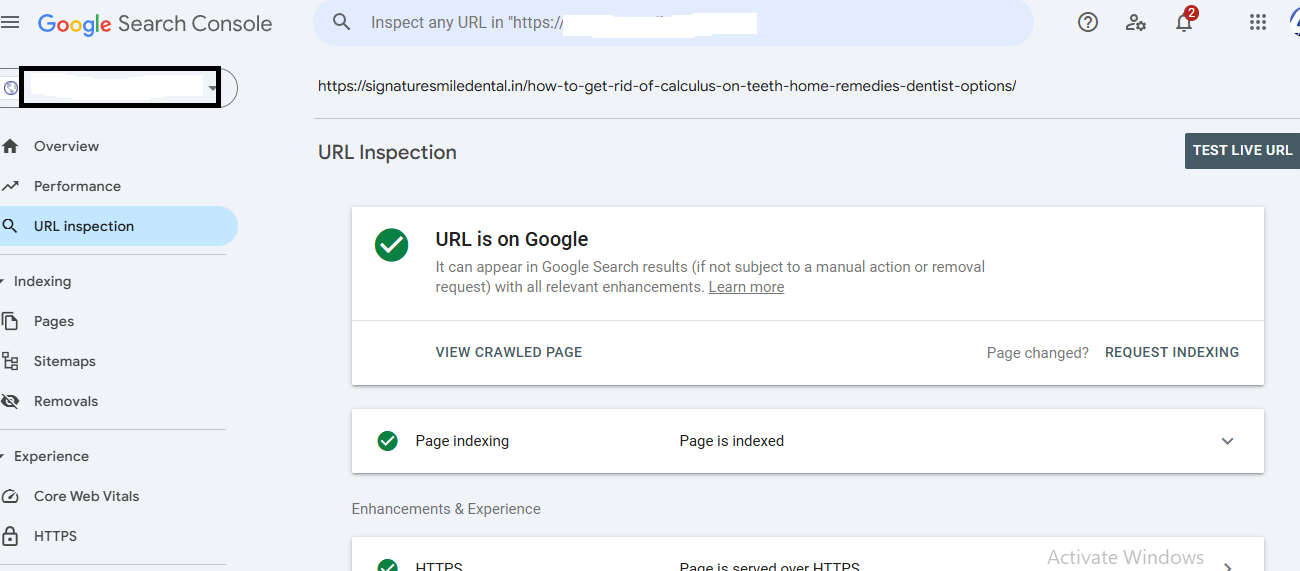
Indexing
Once the content is crawled, it needs to be understood and stored. This process is called indexing. The data collected by crawlers is organized and added to the search engine’s massive index — essentially a digital library of all known web pages.
During indexing, search engines analyze:
- Page content and topic
- Keywords and keyword context
- The freshness of the content
- Multimedia content like images or videos
- Page structure (HTML, headings, schema, etc.)
Search engines also use semantic indexing, which helps them understand the exact keyword and its context and intent.
⚠️ Note: If your page is not indexed, it won’t appear in search results — even if it’s well-designed or keyword-optimized. In the below image page is not index.
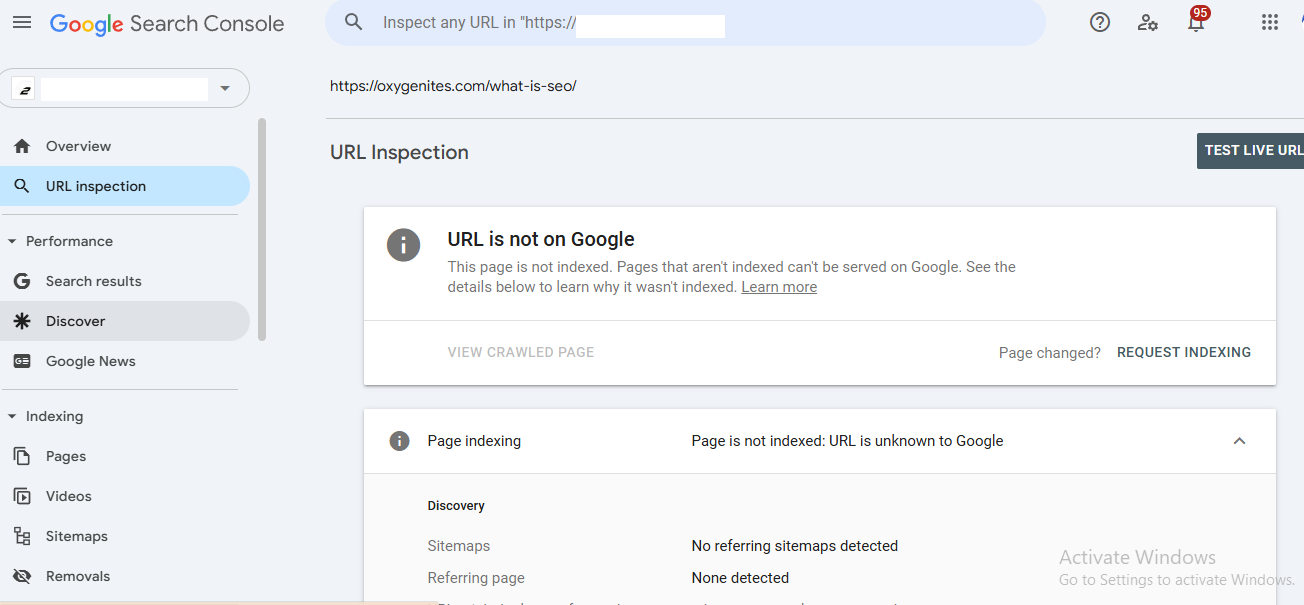
Ranking
When a user search a query into a search engine, it searches its index to find the most relevant pages. This is where the ranking algorithm comes into play.
The algorithm uses hundreds of ranking signals (Google has over 200) to evaluate and sort results. Tops of the most important ranking factors include:
- Keyword relevance
- Page authority (backlinks)
- Mobile-friendliness
- Page load speed
- Secure connection (HTTPS)
- User engagement signals (click-through rates, dwell time)
- Content quality and originality
Search engines try to match the user intent (informational, navigational, or transactional) with the most helpful and trustworthy pages. The goal is to show the best possible answer at the top of the search results.
How Do Search Engines Find Your Pages?
This tool helps you send a request to Google to crawl your website. You can also submit sitemaps for your site and monitor the number of submitted pages added to Google’s index and other details.

Why Sites Don’t Show Up in Search Results?
- Noindex tag present
- Poor content quality
- Blocked by robots.txt
- Lack of backlinks
- Penalty from algorithm updates
What is the Search Engine Algorithm?
Search engines use algorithms to decide the most relevant results for a query.
i. Analyze User Query
Search engines try to explain the intent behind a search query (informational, transactional, or navigational).
ii. Finding Matching Pages
The engine matches the query with indexed pages based on keywords, relevance, and authority.
Why Search Engines Sometimes Display Faulty/No Results?
This happens when the content doesn’t match user intent, is poorly optimized, or lacks authority.
How SEO Works?
SEO works by optimizing various website elements so search engines can explain their relevance and value to user queries. It starts with identifying what people are searching for—using keyword research—and then tailoring your website’s content, structure, and technical setup to target those search terms. By doing this, search engines are more likely to rank your pages higher, bringing in more organic traffic.
For example, run a bakery in Delhi and optimize your site with keywords like “best cakes in Delhi.“ Add quality content about your products, fast loading speed and mobile-friendliness. Google will find your site more valuable for people searching those terms. Over time, you may appear on the first page, attracting customers without paying for ads.
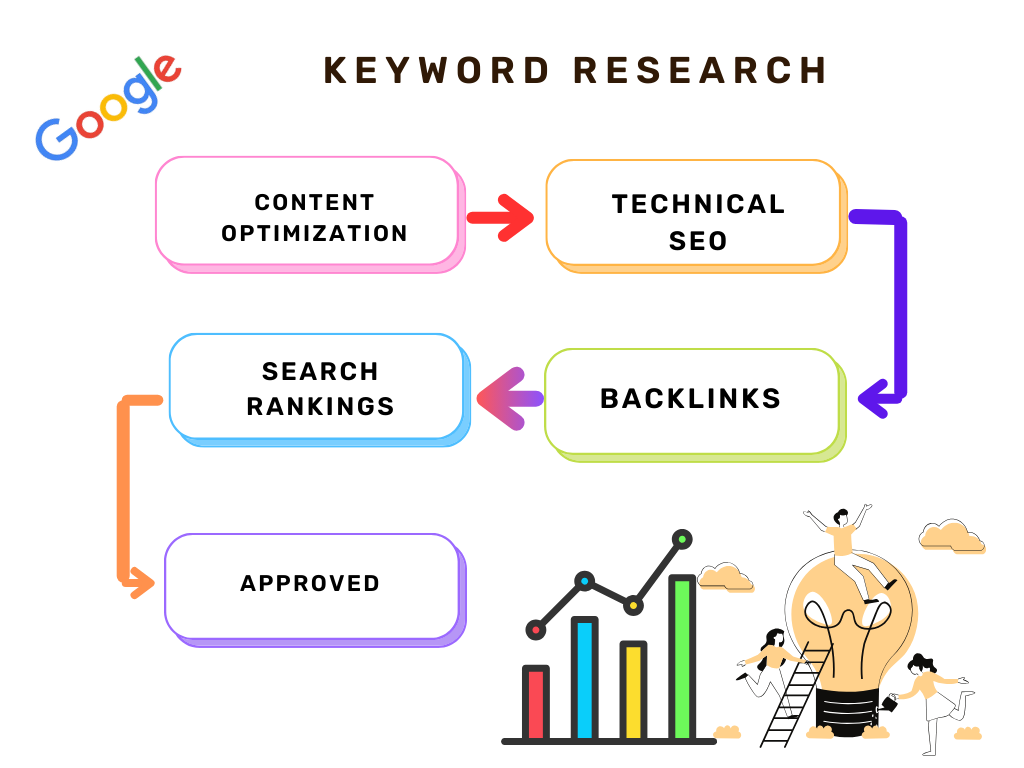
What are the Major Types of SEO?
On-Page SEO
Why is On-Page SEO Important?
It verifies that search engines recognize the content of your pages and rank them appropriately.
What are the Most Important On-Page Ranking Factors?
i) Title Tag Optimization
Use clear, concise titles with the primary keyword near the beginning.
ii) Meta Keywords and Meta Descriptions
Though meta keywords are outdated, a well-written meta description can increase CTR.
iii) Heading Tags
Organize content using H1, H2, H3 and H4 tags appropriately.
iv) Image Optimization and Interactive Media
Use alt text and descriptive file names, and reduce image size.
v) Engaging Content
Content should be unique, relevant, and answer the searcher’s query.
vi) Internal & External Links
Use links to guide users and spread link equity.
vii) Handle Duplicate Content
Use canonical tags and avoid duplicate pages to ensure search engines rank the correct version.
2. Technical SEO
Why is Technical SEO Important?
It provides that search engines can crawl, index, and rank your site effectively.
Technical SEO Best Practices
i) Website Speed
Improve loading times using caching, compression, and fast servers.
ii) Mobile-Friendliness
Responsive design is now a ranking factor. Use Google’s Mobile-Friendly Test.
iii) Site Architecture
Structure your site with a clear hierarchy and use breadcrumb navigation.
iv) Security
Use HTTPS to encrypt data and increase trust.
v) Structured Data Markup
Use schema to enhance search appearance with rich snippets.
vi) Create an XML Sitemap
The below given is an example of XML Site map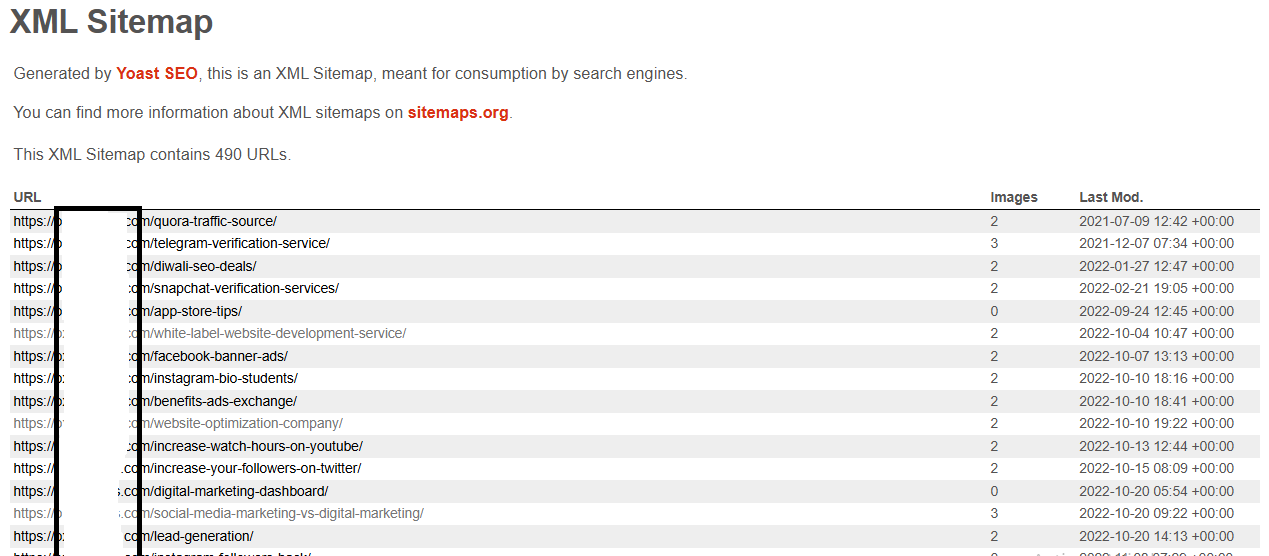 3. Off-Page SEO
3. Off-Page SEO
Why is Off-Page SEO Important?
It builds your site’s authority and trustworthiness.
Off-page Optimization Techniques
i) Quality Inbound Links
Get backlinks from sites with high domain authority(DA).
ii) Social Media Marketing
Share your content or blogs on social media platforms to increase visibility and backlinks.
iii) Content Marketing
Produce high-value blog posts, infographics, and videos.
iv) Localization and Citations
Ensure consistent business information across directories.
v) Email Marketing
Engage audiences and drive traffic to your optimized content.

How do you do keyword research for SEO?
1. What is the role of Keyword research in SEO, and why does it play an important role?
Keyword research is one of the most important aspects of SEO because it directly impacts how well your content ranks on search engines. Acknowledging what your audience is searching for helps you create relevant and optimized content for those specific queries. By knowing the search intent that regular visitors are looking for, you can tailor your website’stciles, blogposts, and services pages to target those particular keywords.
It increases your organic traffic and ensures that the content you produce meets the needs and interests of your audience. For instance, if you’re running an online store that sells sneakers, performing keyword research can reveal terms like “best running shoes for flat feet“ or “affordable sneakers for men,“ which you can target in your content to increase visibility in search results and attract more customers.
The below is the example for top searches.
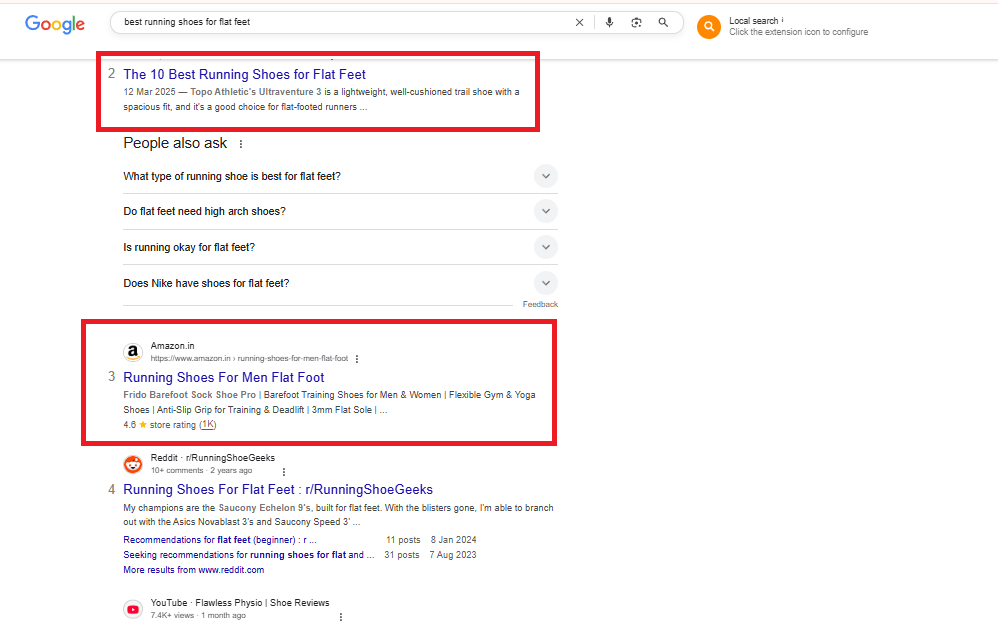
2. Brainstorming for Keywords
Brainstorming for keywords is the initial step in the keyword research process, and it involves thinking about your business, niche, and the potential questions your audience might have. Start by creating a list of broad topics related to your industry, products, or services. These could be things like “digital marketing,” “healthy eating,“ or “home improvement tips.“ Once you have a list of broad topics, you can break them down into more specific subtopics or long-tail keywords.
For example, from “digital marketing,“ you could narrow down to “SEO services,” “email marketing tips,“ or “social media strategies.“ This helps identify general and specific search intents that people might use when looking for solutions in your area of expertise.
3. What are some things to know before finding a suitable keyword? (Competitor’s Keywords Analysis)
It is important to find the most suitable keyword. It involves not only brainstorming but also analyzing your competition. By gathering your competitors’ keywords for which they are ranking, you can gain valuable insights into what works and which topics have significant search volume. Tools like Ahrefs, Semrush, and Moz allow you to analyze your competitors’ keyword strategies. You can enter their websites using these tools to see which keywords they rank for, how much traffic they’re receiving, and the difficulty level of ranking for these terms.
For example, if you find that your competitor’s blog is ranking for the keyword “best-running shoes for long-distance runners,” this could indicate high interest in this topic. You can use this information to target the same or similar keywords in your content, adjusting your approach to make it more compelling or detailed to improve your chances of outranking them.
Competitor analysis gives you a competitive edge and can highlight keyword opportunities that you might not have considered otherwise.
The below image shows you the competitor’s keywords which we can include in your article.

4. How to Choose the Best Keyword?
i) Long-tail Keywords:
Less competition and more targeted traffic.
ii) Latent-Semantic Indexing (LSI) Keywords:
Related terms that support the main keyword.
iii) Follow Recent Trends:
Stay updated using Google Trends.
iv) Location-Based Keywords:
Useful for local SEO (e.g., “plumber in Miami”).
5. Keyword Research Tools
i) Google Trends
ii) Google Keyword Planner
iii) Semrush
iv) Soovle
v) Ubersuggest
Emerging Trends in SEO in 2025
1. Artificial Intelligence in SEO
AI is transforming keyword research, content creation, and competitor analysis.
2. Google’s EEAT Factors
Experience, Expertise, Authoritativeness, and Trustworthiness matter more than ever.
3. Core Web Vitals for Enhanced Ranking
Focus on LCP, FID, and CLS for performance.
Quick Tips to Improve Core Web Vitals
- Use fast hosting
- Compress media
- Defer JavaScript
Practical Guide to Improving Your Website’s SEO in 2025
1. Using AI for SEO
i) AI-Powered Keyword Research
Use AI tools to uncover opportunities faster.
ii) Understanding Search Intent with AI
Analyze what users want to see.
iii) On-page Optimization with AI
Optimize content layout and structure using smart suggestions.
iv) Competitive Analysis
Track competitors’ moves in real-time.
v) Facilitating Content Creation
Generate outlines and FAQs and draft content using AI.
2. Doing SEO Yourself
- Use Google Search Console
- Follow on-page and technical SEO best result
- Build relationships for backlinks
Conclusion
SEO in 2025 requires a mixture of solid fundamentals, awareness of emerging trends, and smart implementation. You can secure your place in Google’s top ranking by aiming at valuable content, user experience, and your site’s technical health.
FAQs
Q1: How long does SEO take to show results?
A: Typically, it is 3–6 months, depending on competition and effort.
Q2: Is SEO better than PPC?
A: SEO brings long-term results, while PPC is immediate. Both have their place.
Q3: Can I do SEO without coding?
A: Yes, many SEO tasks can be completed without coding skills.
Q4: How often should I update SEO content?
A: Update every 3–6 months or when major algorithm updates occur.
Q5: What’s the best free SEO tool?
A: Google Search Console and Google Keyword Planner are excellent free tools.
Q6: What are the latest Google SEO trends in 2025?
A: In 2025, Google emphasizes EEAT (Experience, Expertise, Authoritativeness, Trustworthiness), Core Web Vitals, mobile optimization, and AI-generated helpful content. Following ethical white hat practices and optimizing user experience is crucial to maintaining or improving rankings in search results.


























